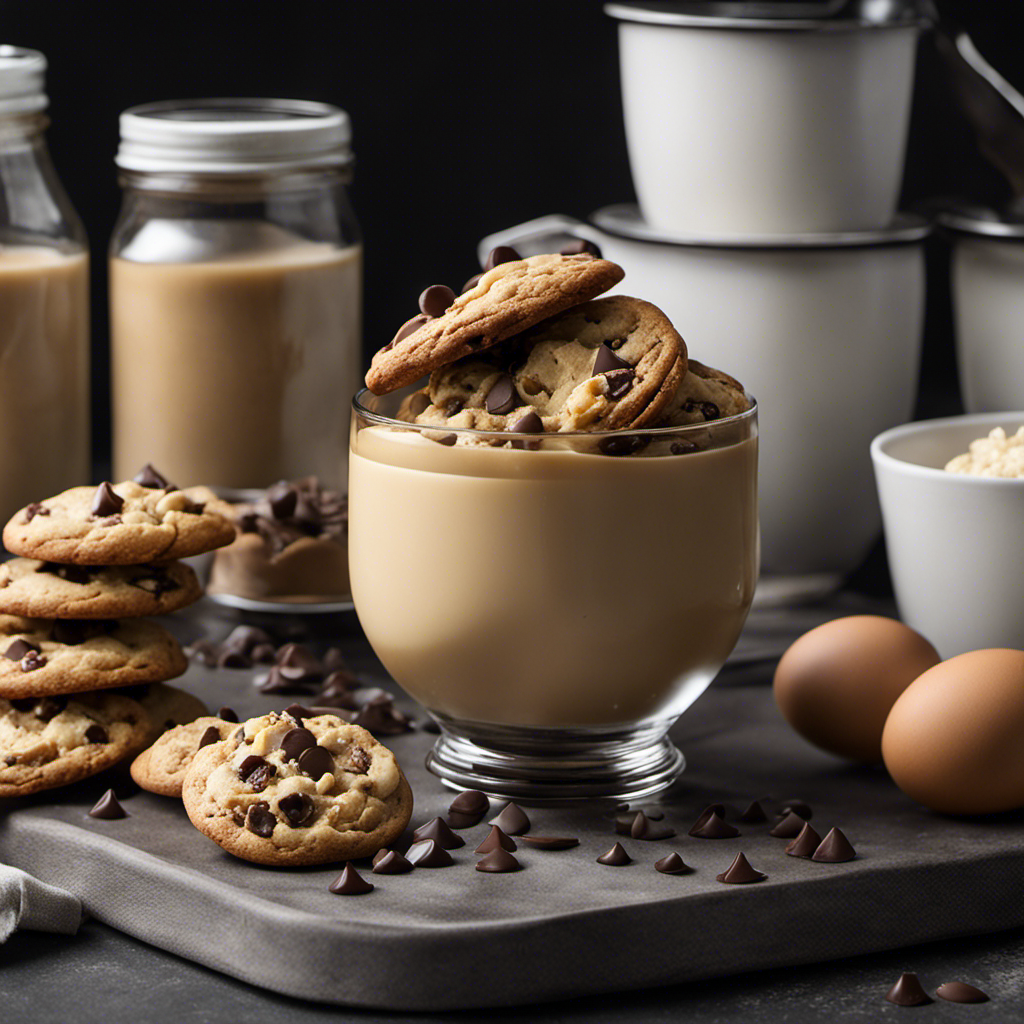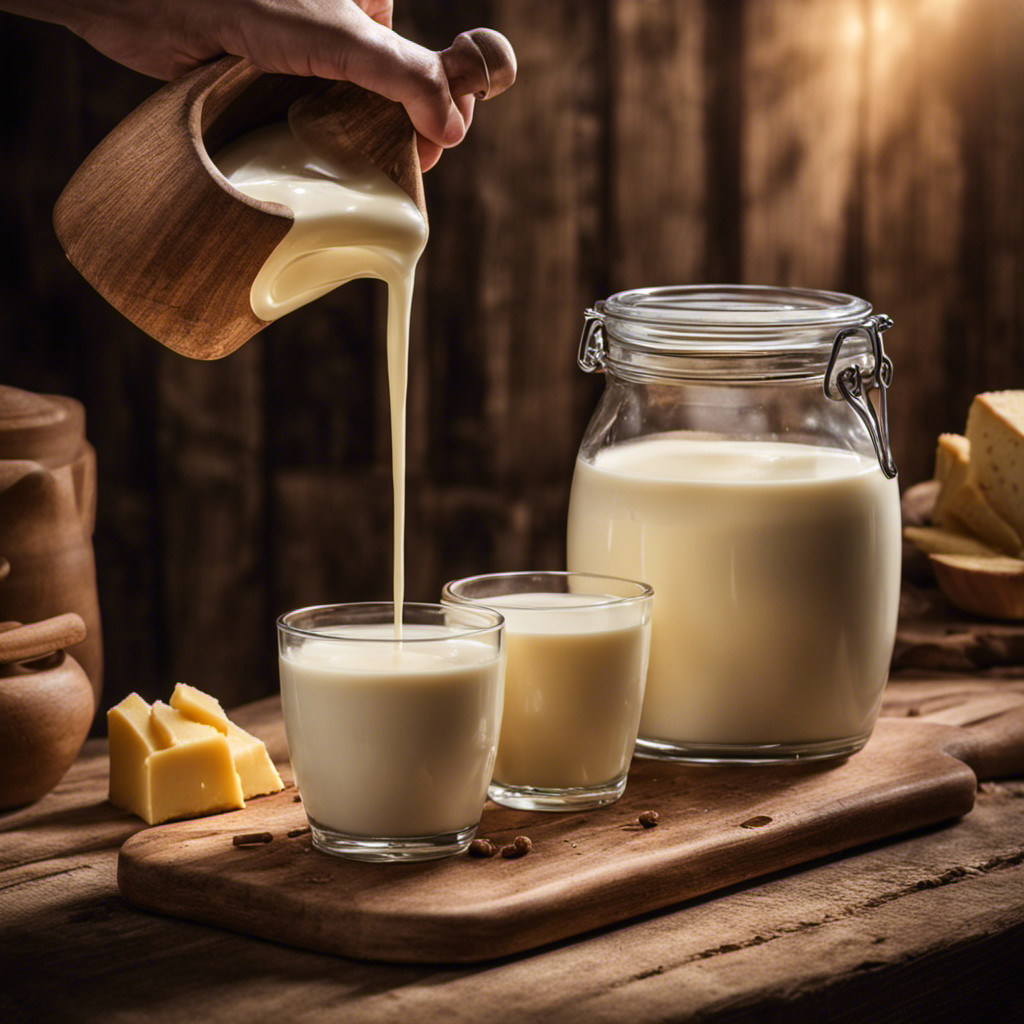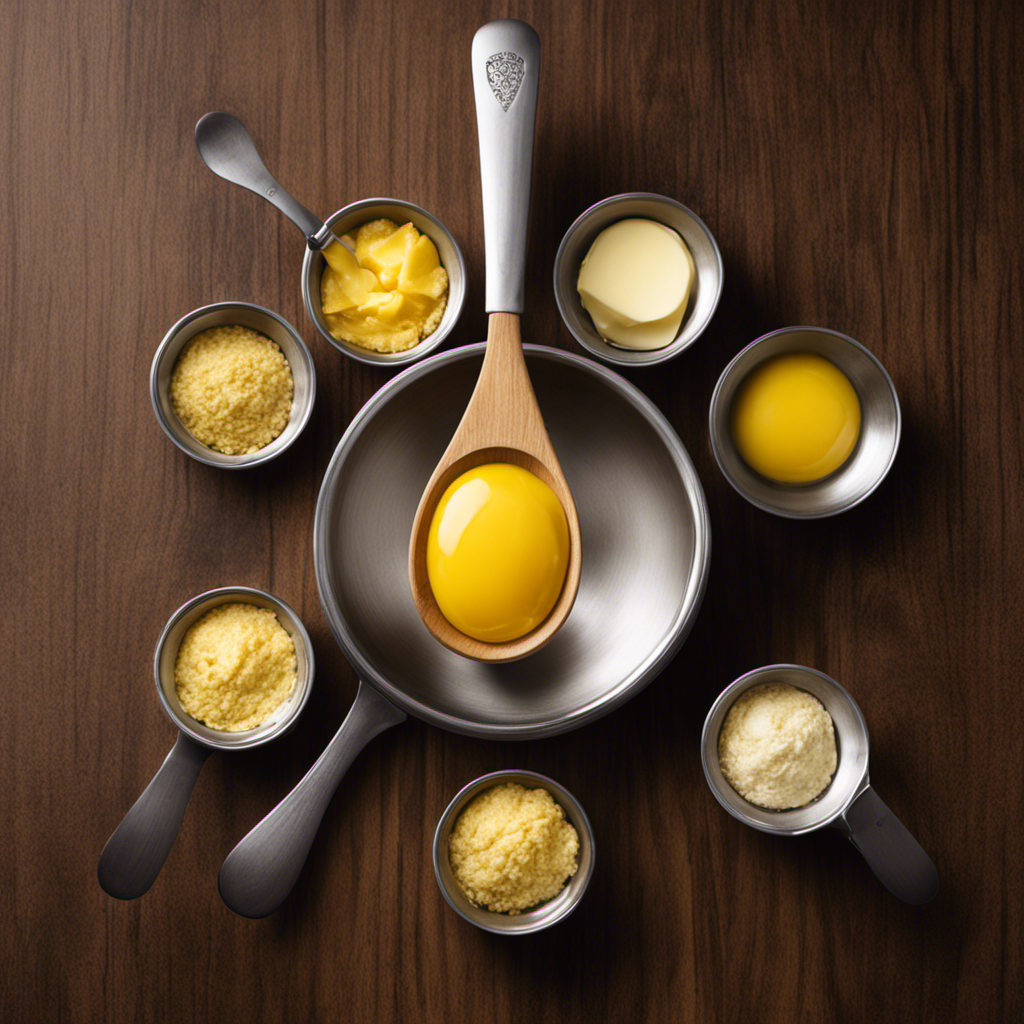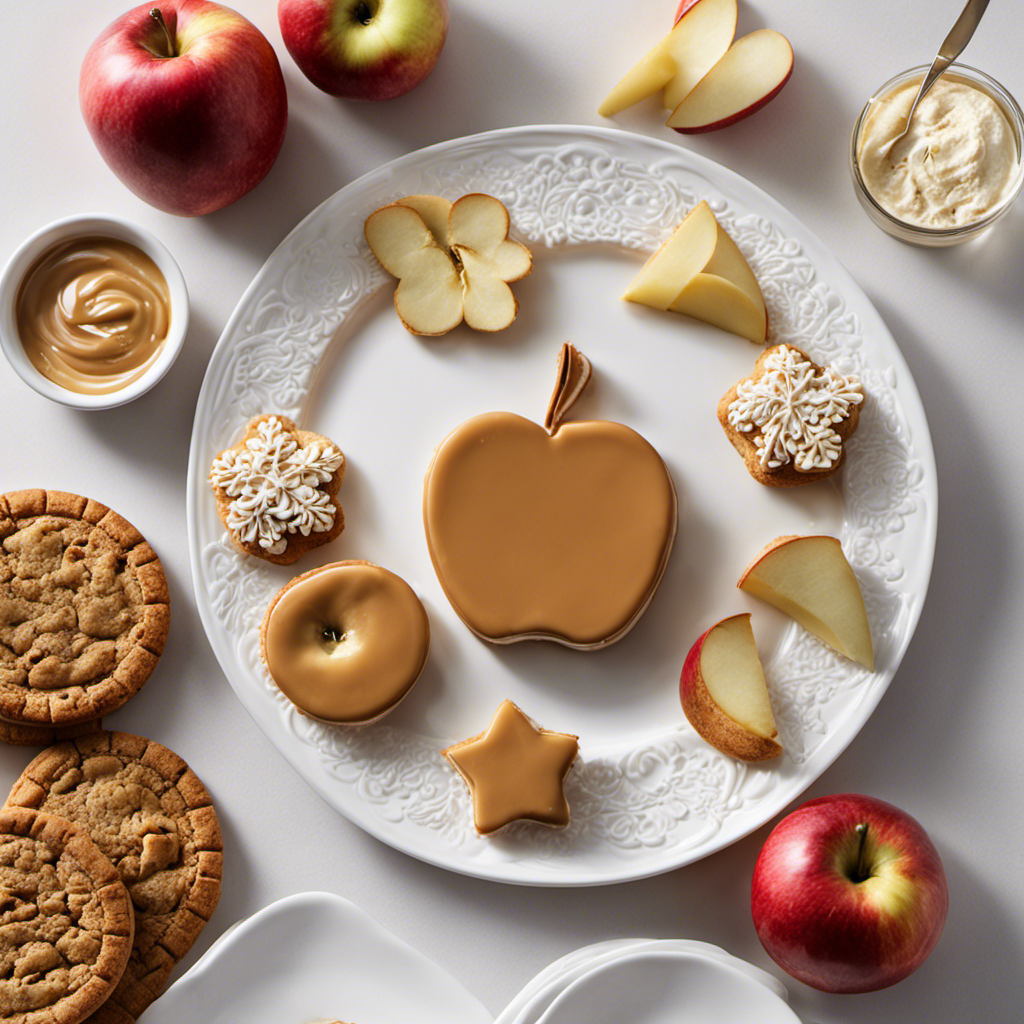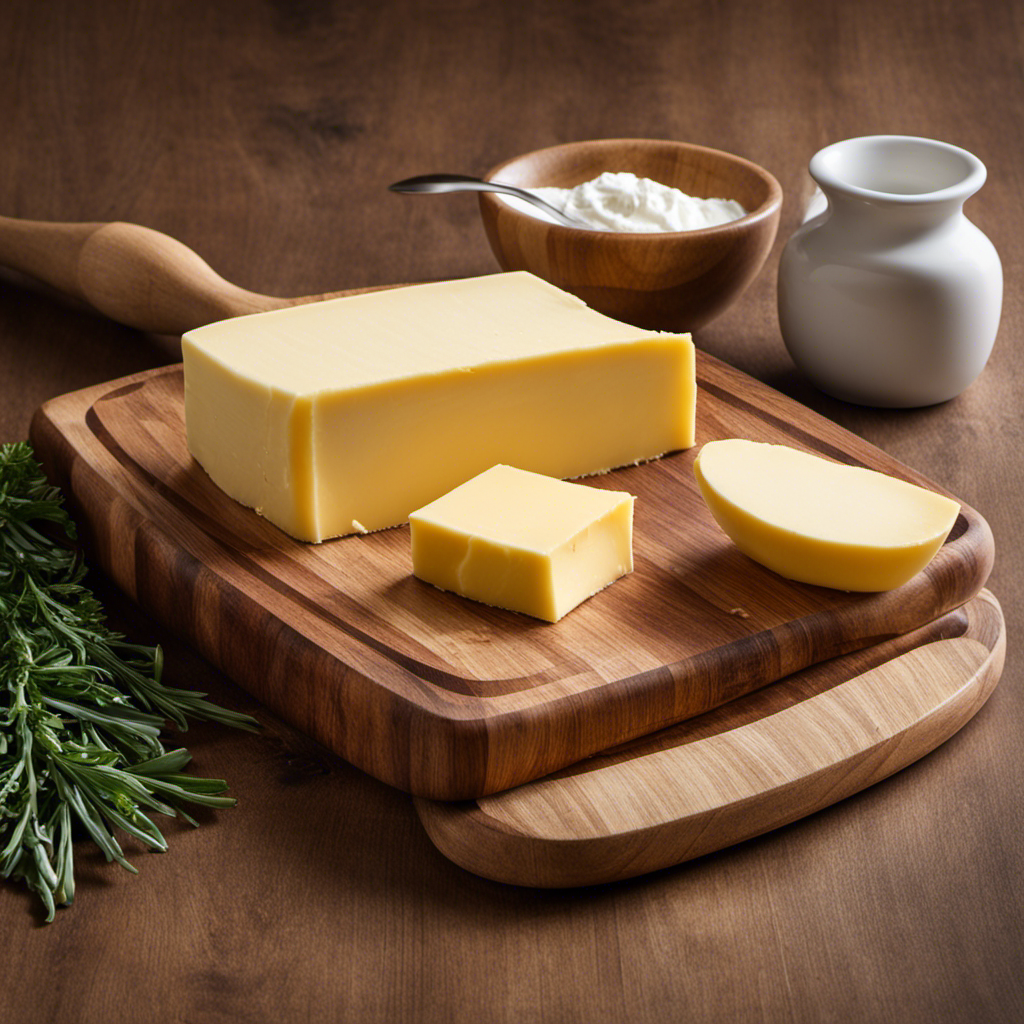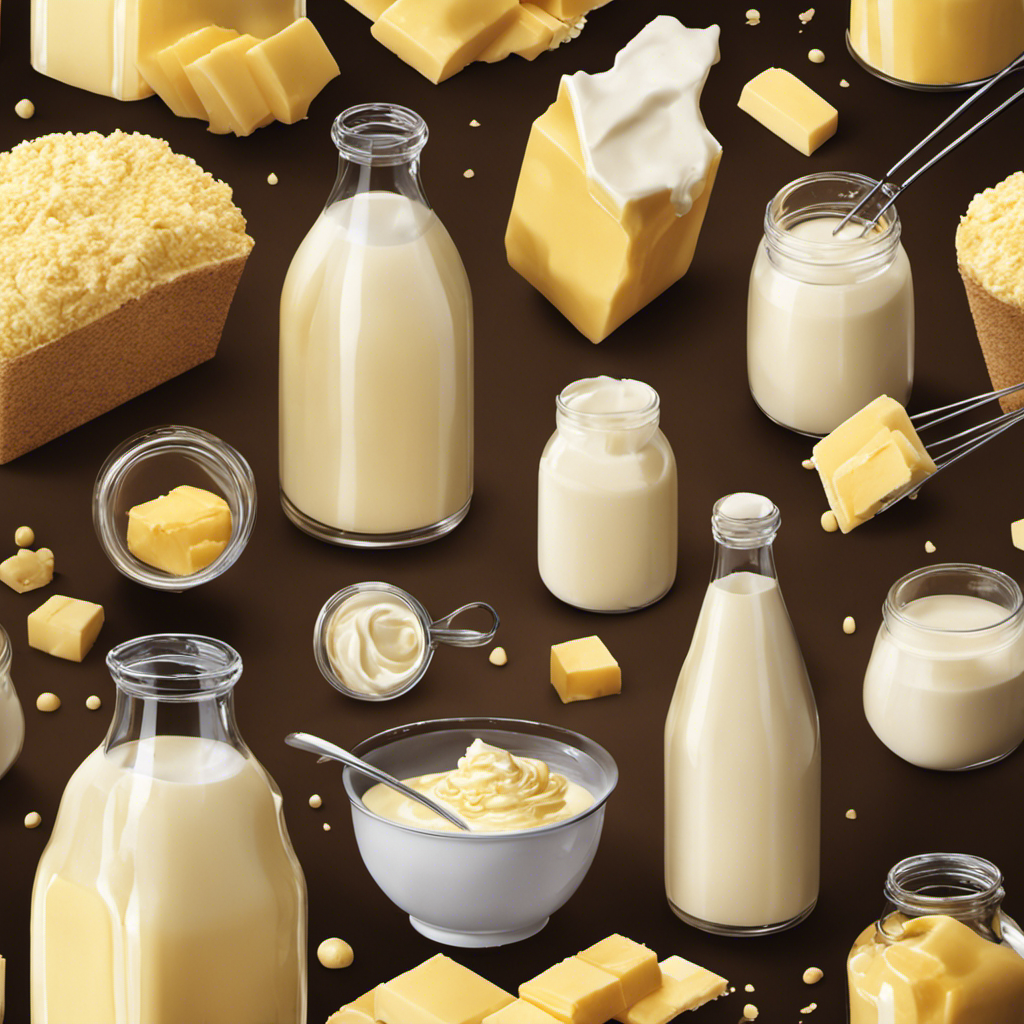As a passionate baker, I’ve always believed that the secret to a perfect chocolate chip cookie lies in the butter.
But what if I told you that you can create the same irresistible treat without any butter at all?
In this article, I’ll guide you through the process of making delectable chocolate chip cookies without butter, using the right fat substitute, adjusting the recipe for optimal texture and flavor, and mastering the mixing and baking techniques.
Get ready to indulge in a butterless cookie experience like never before.
Key Takeaways
- Choosing the right fat substitute is crucial for making butterless chocolate chip cookies.
- Coconut oil is an excellent choice as a butter substitute, providing a subtle coconut flavor and creating a soft and chewy texture.
- Other alternatives like mashed avocado and applesauce can contribute to different textures and flavors in the cookies.
- Adjusting the recipe by using margarine, different sugars, vanilla extract, and salt can enhance the overall taste and texture of the cookies.
The Importance of Choosing the Right Fat Substitute
When making chocolate chip cookies without butter, it’s crucial that you choose the right fat substitute. Opting for a healthy fat can ensure that your cookies still turn out delicious and satisfying.
One of the best choices for a butter substitute is coconut oil. It adds a subtle hint of coconut flavor and helps to create a soft and chewy texture.
Another option is using mashed avocado, which not only provides a creamy texture but also adds a boost of nutrients. However, it’s important to note that using too much fat substitute can result in a greasy texture.
To avoid this, make sure to measure the substitute accurately and consider reducing the overall amount if needed.
Finding the Perfect Butter Alternative
When it comes to finding the perfect butter alternative, there are a few key factors to consider.
First, the taste and texture should closely resemble that of butter, so that you don’t sacrifice any flavor in your recipes.
Second, the substitute should have a similar melting point and consistency to achieve the desired results in baking.
Lastly, it’s important to choose a substitute that is healthier, with lower saturated fat and cholesterol content, while still providing the necessary moisture and richness.
Best Butter Substitutes
One of the best substitutes for butter in chocolate chip cookies is using coconut oil. Coconut oil is a versatile and healthy fat option that works well in vegan baking.
When choosing healthy fats for your cookies, coconut oil is a great choice because it is high in saturated fats, which helps the cookies hold their shape and gives them a rich flavor. It also adds a subtle coconut taste that pairs perfectly with chocolate chips.
To use coconut oil as a butter substitute, simply melt it and use it in equal amounts as the butter called for in the recipe. The result is a delicious batch of chocolate chip cookies that are vegan-friendly and packed with flavor.
Texture Without Butter?
Using coconut oil as a butter substitute in baking can help achieve a desired texture without sacrificing flavor. Coconut oil has a similar consistency to butter when solid, making it an excellent substitute in recipes that require a solid fat. It also has a rich, buttery flavor that can help create a buttery taste in your baked goods. However, it’s important to note that coconut oil has a lower melting point than butter, so it may affect the texture of your baked goods if not used correctly. To ensure the best results, use coconut oil in recipes that call for melted butter or when the butter is creamed with sugar. This will help maintain the desired texture without compromising flavor.
| Alternative Fats | Texture | Flavor |
|---|---|---|
| Coconut Oil | Similar to butter when solid | Rich, buttery flavor |
| Avocado | Creamy, moist texture | Mild, nutty flavor |
| Applesauce | Soft, cake-like texture | Mildly sweet |
Adjusting the Recipe for Texture and Flavor
When it comes to cooking, sometimes you need to get creative with ingredient substitutions to achieve the desired taste.
Whether you’re trying to make a dish vegan-friendly or simply don’t have all the necessary ingredients on hand, knowing how to swap out certain ingredients can make all the difference.
Understanding various techniques can help you achieve the perfect consistency in your dishes, whether it’s a creamy sauce or a fluffy cake.
Ingredient Substitutions for Taste
If you want a richer flavor in your chocolate chip cookies, you could try substituting the butter with margarine. While butter adds a deliciously creamy taste, margarine can provide a unique flavor profile that enhances the overall taste of your cookies.
Margarine is a great fat alternative and flavor enhancer. It contains a higher percentage of water than butter, which can result in a softer, chewier texture. Additionally, margarine often has a slightly sweeter taste, which can complement the sweetness of the chocolate chips.
When using margarine, make sure to use a stick margarine instead of a tub version, as the latter contains more water.
Techniques for Desired Consistency
To achieve a desired consistency in your chocolate chip cookies, consider using a combination of butter and margarine. Choosing the right fats is crucial in achieving the perfect texture in your cookies. Butter adds flavor and richness, while margarine helps to create a softer and chewier texture. By using both, you can achieve a balance between flavor and consistency.
Adjusting the flavors in your cookies is also important. You can experiment with different types of sugars, such as brown sugar or white sugar, to achieve the desired sweetness. Additionally, adding a touch of vanilla extract or a sprinkle of salt can enhance the overall flavor profile of your cookies.
Now that we’ve discussed the importance of choosing fats and adjusting flavors, let’s move on to the next step: mixing and incorporating ingredients.
Mixing and Incorporating Ingredients
Start by creaming together the softened margarine and sugars until well combined.
When making chocolate chip cookies without butter, choosing the right fat substitute is crucial. I recommend using margarine as it provides a similar texture and flavor to butter.
Once the margarine and sugars are creamed together, add in the eggs and vanilla extract, mixing until smooth.
In order to adjust the recipe for texture and flavor, consider using a combination of white and brown sugars. The brown sugar will add moisture and create a chewier cookie, while the white sugar will lend a crispier texture.
After the wet ingredients are well incorporated, gradually add the dry ingredients, mixing until just combined. This will ensure a tender and flavorful chocolate chip cookie, even without the use of butter.
Baking and Cooling Techniques for Butterless Cookies
Once the cookies have finished baking, allow them to cool completely on a wire rack. This step is crucial to ensure that the cookies set properly and achieve the desired texture. When making butterless cookies, it’s important to pay close attention to the baking time and ingredient ratios. Without butter, the cookies may require a slightly shorter baking time to prevent them from becoming dry or overcooked. Additionally, the ingredient ratios need to be adjusted to compensate for the absence of butter. Instead of using butter, you can substitute it with ingredients like vegetable oil, coconut oil, or applesauce to maintain the moisture and texture of the cookies. Below is a table that provides some alternative ingredient ratios for butterless chocolate chip cookies:
| Recipe 1 | Recipe 2 | |
|---|---|---|
| Flour | 2 cups | 1 ½ cups |
| Vegetable Oil | ½ cup | ¾ cup |
| Brown Sugar | 1 cup | ¾ cup |
| White Sugar | ½ cup | ¼ cup |
| Baking Soda | 1 teaspoon | ½ teaspoon |
| Salt | ½ teaspoon | ¼ teaspoon |
| Vanilla Extract | 1 teaspoon | ½ teaspoon |
| Eggs | 2 | 1 |
| Chocolate Chips | 1 ½ cups | 1 cup |
Storage and Shelf Life of Butter-Free Chocolate Chip Cookies
When storing butter-free chocolate chip cookies, it’s important to keep them in an airtight container to maintain their freshness and prevent them from becoming stale. The absence of butter in these cookies makes them more susceptible to drying out, so proper storage is crucial.
Additionally, when making these cookies without butter, choosing the right fat substitute is essential. While options like vegetable shortening or margarine can be used, I prefer using coconut oil as a healthier alternative. It not only adds moisture to the cookies but also imparts a subtle coconut flavor that complements the chocolate chips perfectly.
Furthermore, ingredient substitutions for taste can be made by using dark chocolate chips instead of milk chocolate for a richer and more indulgent flavor.
Overall, with the right fat substitute and ingredient substitutions, butter-free chocolate chip cookies can be stored and enjoyed with optimal freshness.
Frequently Asked Questions
Can I Use Margarine Instead of Butter in This Recipe?
Yes, you can use margarine instead of butter in this recipe. Margarine is a healthier option compared to butter as it contains less saturated fat. To store chocolate chip cookies for maximum freshness, place them in an airtight container at room temperature.
What Other Fats Can I Use as a Substitute for Butter in Chocolate Chip Cookies?
I’ve tried many alternative fats in my quest for the perfect vegan chocolate chip cookies. From coconut oil to avocado, each brings its unique flavor and texture. Experiment and find your favorite!
How Can I Adjust the Recipe to Make the Cookies Chewier or Softer?
To make the cookies chewier or softer, adjust the recipe by increasing or decreasing the amount of baking soda. Increasing it will make them softer, while decreasing it will make them chewier.
Can I Use Oil Instead of Butter in This Recipe?
Sure, you can use oil instead of butter in this recipe! Coconut oil is a great option that adds a hint of tropical flavor. Just make sure to adjust the measurements accordingly for the best results.
How Long Should I Let the Cookies Cool Before Transferring Them to a Storage Container?
I usually let the cookies cool on the baking sheet for about 5 minutes before transferring them to a storage container. This helps to prevent them from spreading too much and ensures they stay fresh for longer.
Conclusion
In conclusion, making delicious chocolate chip cookies without butter is not only possible, but also a delightful adventure in the kitchen. By choosing the right fat substitute and adjusting the recipe for texture and flavor, you can create a batch of butter-free cookies that will satisfy all your cravings.
Additionally, following the proper mixing, baking, and cooling techniques is crucial to achieving the perfect texture and taste. It’s important to take the time to mix the ingredients thoroughly and evenly distribute the chocolate chips throughout the dough.
Once the cookies are baked, allow them to cool completely on a wire rack before indulging. This will ensure that they set properly and maintain their chewiness.
So, next time you’re in the mood for a sweet treat, don’t hesitate to try this butterless recipe and indulge in the taste of pure chocolatey goodness. Remember, sometimes the best things in life come from thinking outside the butter dish.
